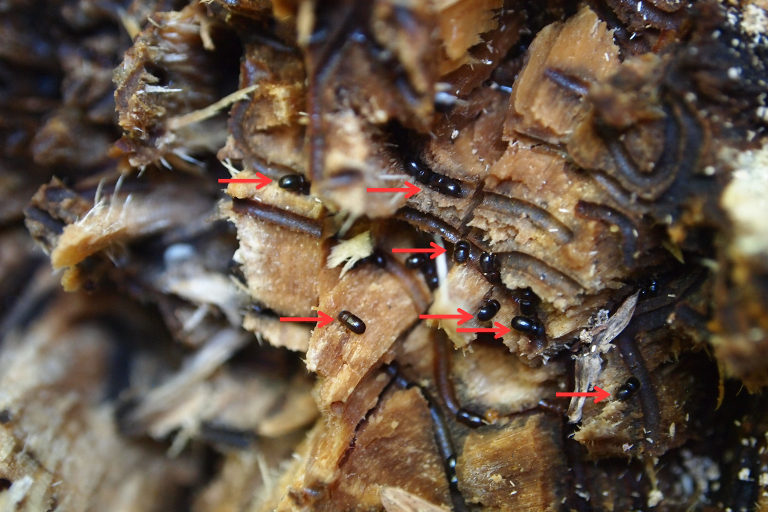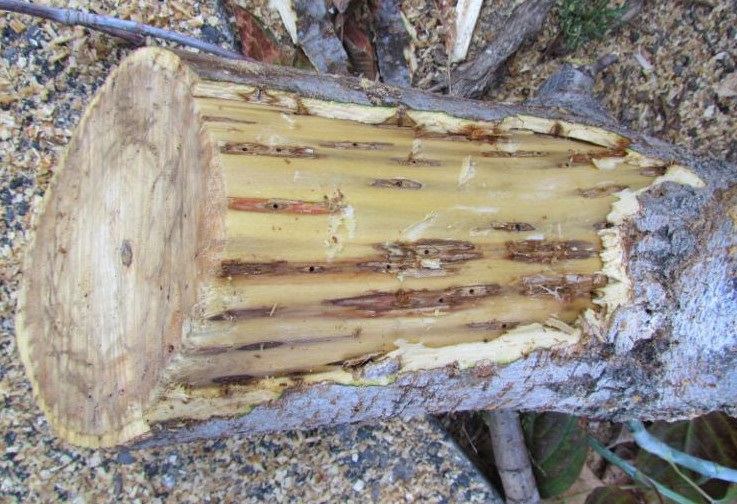GEORGE NEWS - An online tree survey tool is available to help identify trees infested with shothole borer and to create a database of this hungry, deadly beetle's spread.
The survey is conducted by PSHB - Polyphagous Shothole Borer and can be accessed here.
All Georgians who suspect a tree may be infected with the borer are asked to upload a photo of the tree and experts will verify if it is infested by PSHB. They will respond via e-mail with their assessment of your tree.
If your photo contains location data they will add a pin on their PSHB tracking map.
A close-up photo of the bark is required, and a second, more general photo of the tree will allow identification of the type of tree and evaluation of its general health.
General information including treatment advice is available.

Many adult female polyphagous shot hole borers, shown by red arrows, can be seen in this cross section of an infested tree. Their winding galleries can reach to a depth of around 3 inches (8 cm) into the tree's wood. Photo: Akif Eskalen, University of California Riverside

Dark staining from the Fusarium fungus can be seen around the beetle holes and deeper in the sapwood of this boxelder (Acer negundo) trunk. Photo: Akif Eskalen, University of California Riverside
Read previous articles:
'We bring you the latest George, Garden Route news'
















